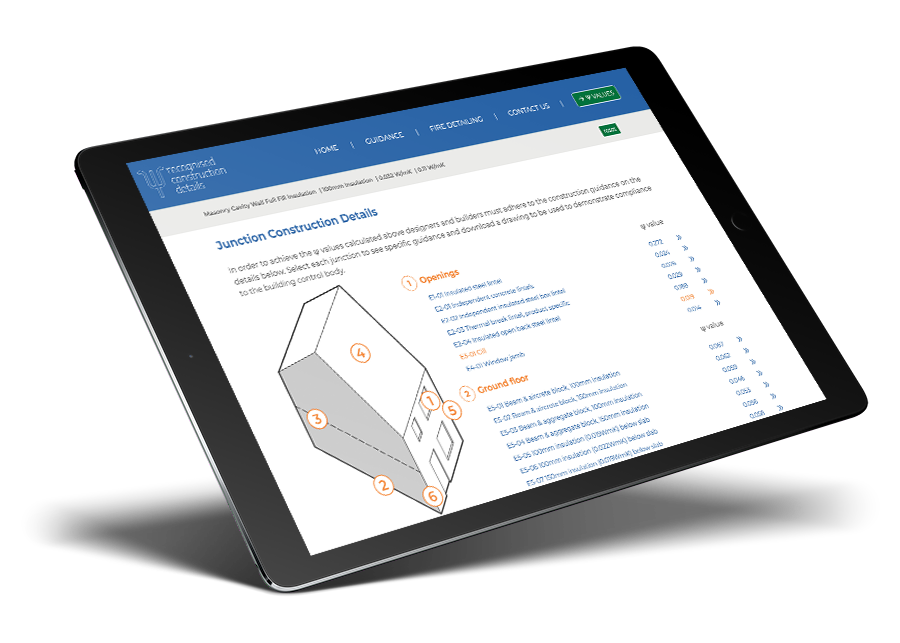Recognised Construction Details
This free to use resource has been developed by the Building Alliance with the support of Studio Partington, Concrete Block Association, Aircrete Products Association and the Brick Development Association.
Recognised Construction Details ™ (RCD) provides energy assessors, builders, architects and other designers with a suite of independently assessed thermal junction details that have been certified for use in demonstrating compliance with Part L of the Building Regulations.
The 2021 update to Part L and the move towards the governments Future Homes Standard has increased the focus on heat loss through thermal bridges in new homes.
Work by the Future Homes Hub goes further and has reported that it is no longer possible to comply with Part L without the use of calculated Ψ values.
Part L defines two methods to assess thermal bridges; individually modelled values or using a database of independently assessed details such as Recognised Construction Details ™ (RCD).
Recognised Construction Details ™ (RCD) provides energy assessors, builders, architects and other designers with a suite of independently assessed thermal junction details that have been certified for use in demonstrating compliance with Part L of the Building Regulations.
The 2021 update to Part L and the move towards the governments Future Homes Standard has increased the focus on heat loss through thermal bridges in new homes.
Work by the Future Homes Hub goes further and has reported that it is no longer possible to comply with Part L without the use of calculated Ψ values.
Part L defines two methods to assess thermal bridges; individually modelled values or using a database of independently assessed details such as Recognised Construction Details ™ (RCD).

Fire Guide
In November 2018 changes to the Building Regulations were made as a result of a catastrophic fire.
The fire at Grenfell Tower brought into question the regulatory control over the construction of external walls. This led to the Building Regulations being updated to stop the use of combustible material in the external walls of residential buildings over 11m in height. The guidance given in Approved Document B: volume 2 (ADBv2) was also updated to reflect this change.
A further change was made to ADBv1 and 2 in 2020 to reduce the height limit for the requirement of sprinklers to be installed in new homes, from 30m to 11m. However, the control of material in the external wall of a new home less than 11m high and constructed of two leaves of masonry has not changed. Due to the inherent fire resistance of clay bricks and concrete blocks, it is still allowable to use combustible materials within masonry cavity walls.
The fire at Grenfell Tower brought into question the regulatory control over the construction of external walls. This led to the Building Regulations being updated to stop the use of combustible material in the external walls of residential buildings over 11m in height. The guidance given in Approved Document B: volume 2 (ADBv2) was also updated to reflect this change.
A further change was made to ADBv1 and 2 in 2020 to reduce the height limit for the requirement of sprinklers to be installed in new homes, from 30m to 11m. However, the control of material in the external wall of a new home less than 11m high and constructed of two leaves of masonry has not changed. Due to the inherent fire resistance of clay bricks and concrete blocks, it is still allowable to use combustible materials within masonry cavity walls.

Building Regulations
This simple guide to the current requirements of the Building Regulations is also a reminder of what has been recognised for centuries, namely that masonry buildings are inherently robust for energy efficiency, fire resistance and sound insulation. Masonry buildings are by their nature and materials resistant to fire.The designer or specifier should remember that this fundamental quality leads to simpler detailing and construction and this simplicity in turn benefits the thermal and acoustic detailing as well as the construction.

